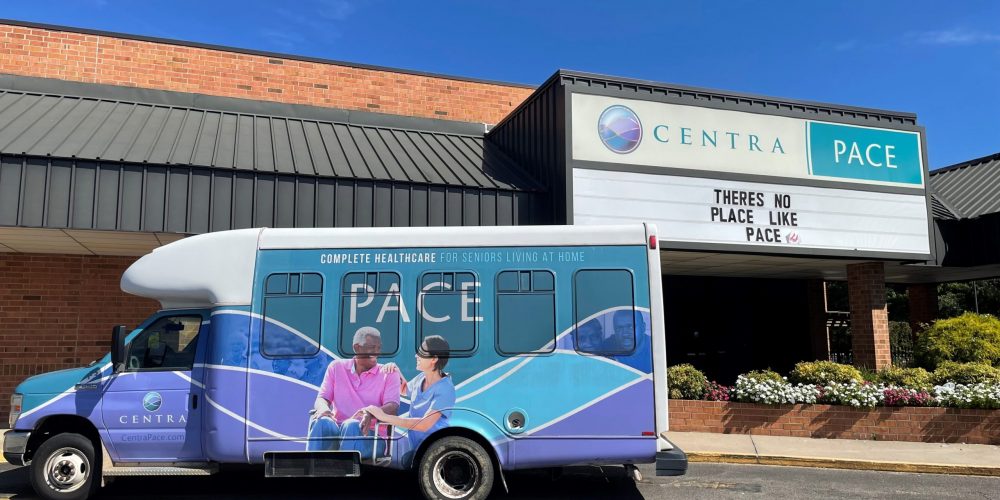Greetings from the Executive Vice President
Celynda Tadlock, PharmD, MBA

Welcome to our latest edition of Pharmastar News! We hope you enjoyed our first few issues and found them to be a great source of PBM information. In our new issue, you’ll discover:
- Our new pharmacy rebate program
- Where to find DMP resources online
- Diabetes drug updates, and more
Plus, we put Centra PACE in Virginia in our client spotlight. You’ll also meet Sheryl Nall, a dedicated Client Success Specialist on our Pharmastar team. Feel free to reach out to us with any questions. We are driven to be the best pharmacy benefit services provider, and it’s an honor to serve you.
New Rebate Program Provides Improved Oversight and Efficiency
Pharmastar launched a new rebate contracting program on January 1, 2022, for all new and existing clients. The new program enables Pharmastar to work closer with drug manufacturers, cutting unneeded steps while providing better oversight and a clearer view into rebate claims.
The new model will also improve efficiency while giving clients enhanced reporting to help monitor accuracy. By eliminating multiple levels in the rebate process, the Pharmastar team can provide better information to support emerging audit trends, helping to make audits easier.
“During any audit, quickly providing proof of the actual rebate received is important in supporting your claim,” said Andrea Slowiak, Director of Operations for Pharmastar. “When plans are able to swiftly provide the correct rebate documentation, they pave the way for smoother audits with no findings.”
If your organization was already participating in our previous rebate offering, your program is automatically enrolled. If your program is using another rebate program, please reach out to us to explore our new capabilities.
Client Spotlight: Centra PACE

Lynchburg, Farmville, and Gretna, Virginia
With a mission to help the elderly in Lynchburg, Virginia and surrounding communities, Centra PACE opened its doors in 2009 as the state’s fifth PACE program. As demand for PACE services grew, so did Centra PACE, expanding its presence with programs in nearby Farmville in 2013, and in Gretna three years later. Today the three sites serve a total of 282 participants and continue to enroll new participants.
Centra PACE is part of Centra Health, a regional nonprofit healthcare system with four hospitals and a large provider network. Centra Health serves over 500,000 people as the dominant provider of critical medical services in central and southern Virginia.
As a PACE provider, Centra PACE has its own dedicated interdisciplinary team (IDT) but being part of a healthcare system helps strengthen the care coordination and, in turn, the quality of care that are chief pillars of healthcare today.
“Having so many specialty services and hospitals in our network has really proven to be a great benefit,” said Megan Beach, MSHA, Business Manager for Centra Pace. “The ability to utilize the services within the Centra Health system, and having hospital support for any admissions, are advantages that benefit our PACE participants and their quality of care.”

“There’s a closeness in the relationships we have with our health system providers,” continued Beach. “A trust develops at that level of communication and collaboration. It helps that we use the same EHR as well.”
The Lynchburg and Gretna PACE sites use Centra’s Virginia Baptist Hospital outpatient pharmacy to fill most participant prescriptions, while the Farmville site utilizes Centra’s Southside Community Hospital outpatient pharmacy. All three PACE facilities have a medication room on site where medication is stored and packaged to send home with PACE’s transport team.
“For pharmacy benefit management we chose Pharmastar because we value having their expertise and support. Those elements allow us to really focus on what we need to accomplish day to day,” said Beach.
The drive toward value-based care
Before Centra PACE opened, there weren’t many viable options to provide comprehensive high-quality care to older adults. This drove elderly patients to rely on avenues of care that were unneeded and overutilized.
“Take the emergency room,” said Beach. “It’s heavily utilized and not always necessary. At Centra PACE, we can easily track patient utilization to see how much ER usage diminishes over time. It’s a win-win for the health system and our PACE program,” she said. “We’re making sure participants get the appropriate level of care and reduce the need for emergency care through the PACE comprehensive care model.”
Regardless of whether a program is part of a health system, PACE organizations across the nation have felt the COVID-19 pandemic’s impact. “One of the biggest lessons learned is that we can operate a lot more smoothly than we thought we could outside of our day centers. Our day centers have always been our primary hub of care, and we’ve always leaned heavily on the belief that participants need to be here to be seen for these services,” Beach explained.
“But we found that that the PACE model can be successful with less day center utilization, and there are some participants who really don’t want to leave their homes,” she said.
“We have a great team and strong leadership support,” Beach concluded. “We have really fine-tuned how to tailor care to meet participants where they are, including home. We are always exploring creative ways to meet participant needs and keep everyone safe at the same time.”
Where to Find Drug Management Program (DMP) Resources
The National Pace Association (NPA) offers members extensive DMP resources on the association’s password-protected website. After logging in, click this link to access materials. You’ll find guidelines to help you create your main DMP document, plus guidelines for participants who need to be designated as PARB and ARB. You can also visit the CMS website for DMP information and view frequently asked questions.
Pharmacist’s Corner
Interchangeable Semglee® update
Semglee (insulin glargine-yfgn), first launched in 2020, was the first insulin biosimilar product approved for the treatment of diabetes. In 2021, the U.S. Food and Drug Administration (FDA) approved Semglee (branded) and insulin glargine-yfgn (unbranded) as the interchangeable biosimilars to Lantus®. For patients currently on Lantus, the pharmacy can automatically substitute the interchangeable, lower-cost insulin glargine-yfgn.
Active biosimilar interchanges are being executed for Pharmastar plans that utilize our CareKinesis PACE-centric pharmacy services. When receiving a Lantus prescription, CareKinesis conducts prescriber outreach to request consideration to write for a biosimilar. Pharmastar recommends that plans not using CareKinesis consult with their pharmacy services provider to ensure active interchanges are being executed.
Insulin glargine-yfgn is available as 100 unit/mL in a 10 mL multiple dose vial and 3 mL pre-filled pens. Currently, the average wholesale price (AWP) for a package of five pens is approximately 6% less for Semglee and 65% less for the insulin glargine-yfgn, compared to a five-pack of Lantus pens.
When changing between any insulin products, it is not unusual to experience some variation in blood sugar control when a switch is made. Although considered biosimilars, the patient’s blood glucose levels blood glucose levels and HgbA1c should be closely monitored for efficacy and safety, especially if any changes are made to therapy. Learn more.
GLP-1 agonists as an adjudicate or replacement to insulin in older adults
Elderly patients with diabetes are at high risk of polypharmacy, drug-drug interactions, and drug-disease interactions. Higher rates of complications and death are associated with both longer duration of diabetes, greater age, and coexisting chronic diseases. Coexisting conditions and use of multiple medications also significantly increase the risk of hypoglycemia which can subsequently increase the risk for falls, fractures, cardiac events, dementia, and other adverse events.
Glucagon-like peptide-1 (GLP-1) receptor agonists include agents such as semaglutide (Ozempic®), liraglutide (Victoza®), exenatide (Bydureon BCise®), and dulaglutide (Trulicity®). These agents work in the pancreas by increasing insulin secretion and reducing the secretion of the hormone, glucagon, which acts to increase glucose levels in the blood stream. It also slows the speed the stomach empties and works in the brain to help regulate appetite. GLP-1 agonists provide a good treatment option for older adults with multiple conditions and medications as they are associated with a low hypoglycemia risk. Insulin therapy is usually reserved for use in older adults with highly elevated A1Cs (> 9) and addition of a GLP-1 agonist may be an appropriate option for these patients as well to help lower the chances of significant hypoglycemia. Use of a GLP-1 agonist over insulin may be preferred in older patients who are close to glycemic goals or whose primary concern is avoidance of hypoglycemia. There is also increasing evidence GLP-1 agonists have effects in other systems beyond the endocrine system and may help alleviate symptoms associated with other coexisting conditions. However, more evidence is needed for use beyond the treatment of type 2 diabetes.
Pharmastar Team Member Spotlight
Meet Sheryl Nall, Client Success Specialist
 I joined Pharmastar in 2014 after leaving a retail pharmacy, so I’m celebrating my 8th anniversary with the company this year. I was first hired as a pharmacy benefits specialist on the help desk, where I trained as a member of the enrollment team. In 2017, I became a Pharmastar Client Success Specialist. I’m the primary contact for PACE clients, helping them with anything they might need – reports, CMS compliance, pharmacy outreach to assist with proper billing, and more.
I joined Pharmastar in 2014 after leaving a retail pharmacy, so I’m celebrating my 8th anniversary with the company this year. I was first hired as a pharmacy benefits specialist on the help desk, where I trained as a member of the enrollment team. In 2017, I became a Pharmastar Client Success Specialist. I’m the primary contact for PACE clients, helping them with anything they might need – reports, CMS compliance, pharmacy outreach to assist with proper billing, and more.
The most enjoyable part of my job:
I enjoy being able to help clients each day. I look forward to their calls and updates and value my close rapport with them. I feel as though I know my clients outside of work. It’s great being able to share pictures of my children as they grow and seeing their family photos as well.
I also love being able to find new ways to use technology to make our lives easier. At one time, we performed a lot of work manually using Microsoft Excel. Now, I’ve discovered new ways to use all the functions and developer modules we have to pinpoint needed data.
Before Joining Pharmastar:
I worked in a retail pharmacy setting as a senior pharmacy technician. That was my first pharmacy job after graduating college.
I live in Wisconsin but grew up in Michigan. I studied at Michigan Technological University in Houghton, earning with a bachelor’s degree in biological sciences with a minor in psychology.
About my family:
This year will be my 10th wedding anniversary. My husband and I met in an off-road club in college. I was one of the few girls who had a vehicle to drive: a lifted Jeep Wrangler. We now have two little boys. Hudson is turning 6 years old this spring, and he’s just finishing his first year of kindergarten. Miles will be 3 this fall. He’s a daredevil trying to keep up with his big brother.
We also have an 8-year-old pit bull who thinks he’s a chihuahua-size lap dog. Spoiler alert: He’s 80 pounds and built like a tank. We adopted him at 6 months old. He’s the best snuggler and big brother to our boys.
What I do for fun:
My husband’s love of cars has slowly become a big part of my life. Every summer we attend car events as a family. Our boys love them just as much we do. We race autocross in our 1966 Chevelle Malibu. We have friends we refer to as our car family, and we all get together at these events, even though we may all live across the country.
We’ve traveled as far as Pennsylvania and Kentucky to go racing. My husband has even traveled to Colorado for events. We dropped off our son Hudson on his first day of kindergarten in the race car.
CMS Updates Made Simple
Overwhelmed by the number of update memos coming your way from CMS? The Pharmastar Bulletin summarizes memos relevant to PACE and includes follow-up actions to take. Subscribe today to the bi-weekly bulletin and stay current.
Recent CMS Updates of Note
|
|
|
|
|
|
For the latest CMS response to COVID-19, please visit the CMS.gov website.
Please note that this information is provided to you in summary form for general informational purposes only and does not constitute legal or regulatory compliance advice. It is your responsibility to consult with your Compliance Officer and/or legal counsel to determine applicability of any regulation or standards referenced herein to your organization and/or processes.
Have questions? Want more information? Please reach out to us at info@Pharmastar.com
 Time2Human ™ 6 seconds – Average Speed to Answer
Time2Human ™ 6 seconds – Average Speed to Answer


